Yazoo Pumps: The Zombie Project That Must End
The Yazoo Pumps project on the Big Sunflower River, Mississippi, was a horrible idea in 1940 and it is a horrible idea today. Learn about the history of the project and take action to make sure it doesn't happen - again.
Late last year, the U.S. Senate appropriations committee proposed a legislative “rider” that would have required the U.S. Army Corps of Engineers to “immediately” initiate construction of the environmentally devastating Yazoo Pumps. A huge outpouring of opposition prevented the legislative “rider” from becoming law, but it was only pulled from the bill at the very last minute. The very real risk of future attempts to resurrect this project catapulted Mississippi’s Big Sunflower River to the top of the list of America’s Most Endangered Rivers® of 2018.
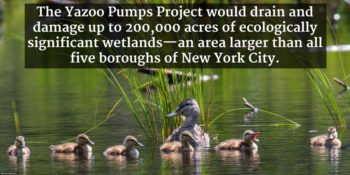
The $300 million Yazoo Pumps would drain and damage 200,000 acres of ecologically rich waterfowl habitat in the Mississippi Delta so large landowners can increase agricultural production on marginal lands that have always flooded. This project is so damaging it was vetoed by the George W. Bush Administration in 2008 under the authority of the Clean Water Act. That veto was intended to permanently stop the project.
A Project from Another Era
The Yazoo Pumps are a hold-over from another era. Originally authorized by Congress in 1941, the Yazoo Pumps would be one of the world’s largest hydraulic pumping plants. The Pumps would be located in one of the most sparsely populated regions in the state of Mississippi. When turned on, the Pumps would move up to six million gallons of water per minute from one side of an Army Corps-built flood control structure to the other side of that structure.
These massive pumps will not protect communities from floods. Instead, they will drain wetlands so that a small number of large landowners can intensify agricultural production on lands that regularly flood.
Astonishing Damage
The Environmental Protection Agency (EPA) and an independent hydrologic review found that the project would drain and damage up to 200,000 acres of ecologically significant wetlands—an area larger than all five boroughs of New York City. The Army Corps acknowledged that 67,000 acres of wetlands would be harmed, but the agency admitted that it did not evaluate the full range of wetland impacts.
The wetlands that would be drained provide some of the richest stopover habitat in the country for migratory birds, including waterfowl that live out much of their lives far beyond the borders of Mississippi. More than 450 species of fish and wildlife, including 257 species of birds—and 20 percent of the nation’s duck populations—rely on the wetlands that would be drained by the Yazoo Pumps.
The wetlands that would be drained also support vast numbers of other wildlife, including the Louisiana black bear—the inspiration for the “Teddy Bear”.

During a 1902 hunting trip in the Yazoo Pumps project area, President Teddy Roosevelt refused to shoot a black bear that had been captured and tied to a tree. The story of a President who refused to carry out such an ignoble act was memorialized in political cartoons that ran in papers across the country. Those cartoons in turn lead to the creation of a stuffed bear named Teddy.
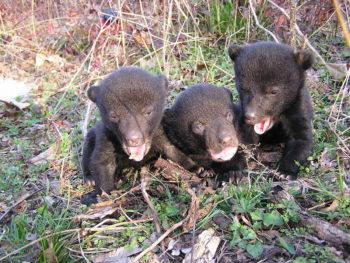
While the Teddy Bear thrived, the Louisiana black bears did not. They were wiped out along with millions of acres of bottomland hardwood wetlands that supported them. However, protection of the Yazoo Pumps area wetlands gave the Louisiana black bear vital habitat that it needed to recover and thrive. In 2015, the U.S. Fish and Wildlife Service announced that the federally-threatened Louisiana black bear had met its recovery goals and no longer needed the protections of the Endangered Species Act.
The EPA Veto
The environmental harm that would be caused by the Yazoo Pumps led the George W. Bush Administration to veto the project under the rarely used Clean Water Act Section 404(c) veto authority.
This authority lets the EPA put a stop to projects that will cause an, “unacceptable adverse effect on municipal water supplies, shellfish beds and fishery areas (including spawning and breeding areas), wildlife, or recreational areas.” EPA has always reserved the veto for only the most environmentally egregious actions. The Yazoo Pumps definitely meets that standard.
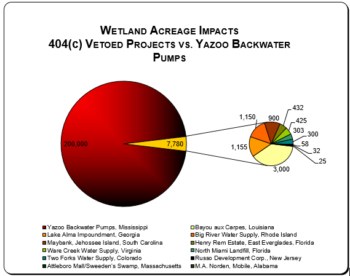
The 200,000 acres of wetland impacts that would be caused by the Yazoo Pumps are 25 times the combined wetland impacts of all previously vetoed projects. Even the “smaller” level of 67,000 acres of impacts acknowledged by the Army Corps are 8.6 times the combined wetland impacts of all previously vetoed projects.
After fully vetting the project’s environmental impacts and carefully considering tens of thousands of public comments, EPA put a stop to the Yazoo Pumps in 2008 by issuing the 12th Clean Water Act veto in the history of the Clean Water Act. EPA based its veto on the Army Corps’ assessment of 67,000 acres of harm.
EPA determined that the Yazoo Pumps would cause “unacceptable damage” to, “some of the richest wetland and aquatic resources in the nation,” including a highly productive floodplain fishery, substantial tracts of highly productive bottomland hardwood forests, and important migratory bird foraging grounds.
The U.S. Fish and Wildlife Service concurred with these findings, and highlighted its concerns that the project would drain wetlands that provide critical wildlife habitat in the Panther Swamp National Wildlife Refuge, the Yazoo National Wildlife Refuge, and the Delta National Forest.
The public overwhelmingly agreed with the decision to veto the Yazoo Pumps. Of the 48,000 comments submitted by members of the public, 99.9 percent supported the veto, including 90 percent of the comments from Mississippians and more than 540 independent scientists.
Mississippi’s largest newspaper, the Clarion Ledger, wrote five editorials opposing the Yazoo Pumps. The New York Times wrote six editorials lampooning it.
A Multi-Million Dollar Handout to a Few
The unacceptable harm from this project cannot be balanced against any meaningful benefit. Only a small number of large farms, averaging 1,000 acres each, would be able to benefit from the ability to intensify agricultural production. Given the project’s enormous price tag, this translates into a multi-million dollar handout to these landowners, many of whom already receive substantial farm subsidy payments. Not surprisingly, an independent economic analysis demonstrates that the Yazoo Pumps will, at best, return only pennies on the dollar.
Congress Should Respect the Veto Process and Listen to the Public
While there are many complex environmental decisions facing the nation, whether or not to construct the Yazoo Pumps is not one of them. As acknowledged by Senator John McCain in 2004, the Yazoo Pumps are, “one of the worst projects ever conceived by Congress.”
Congress should respect the robust and comprehensive process that led to the Clean Water Act veto, and the overwhelming public support for that veto, and reject all efforts to resurrect the Yazoo Pumps.
This guest blog by Melissa Samet, Senior Water Resources Counsel, National Wildlife Federation, is a part of our America’s Most Endangered Rivers® series on the BIG SUNFLOWER RIVER.


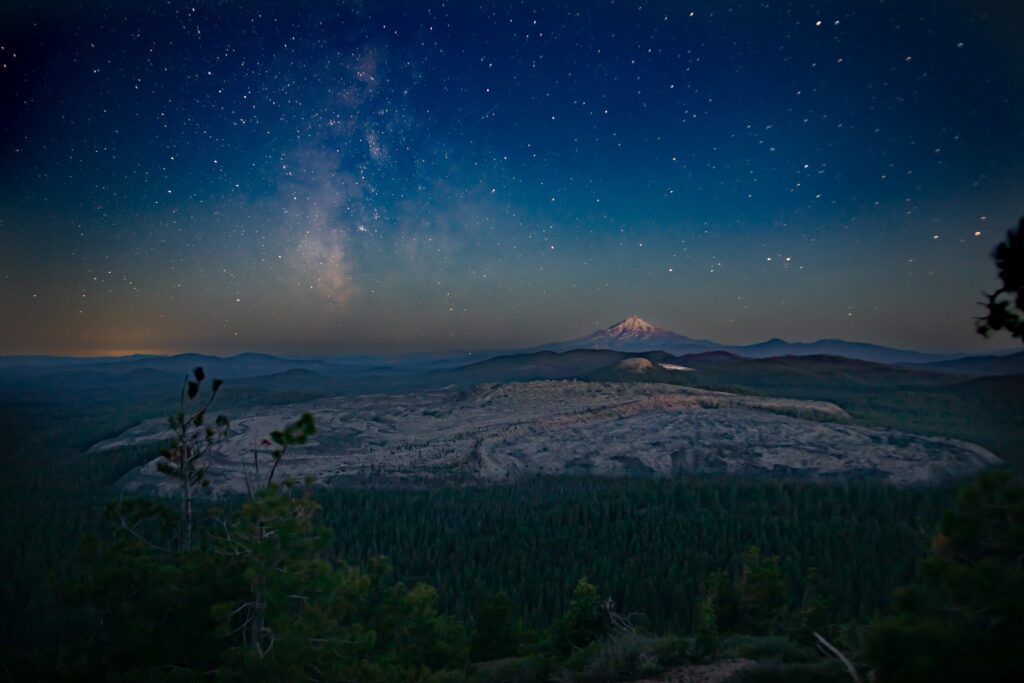
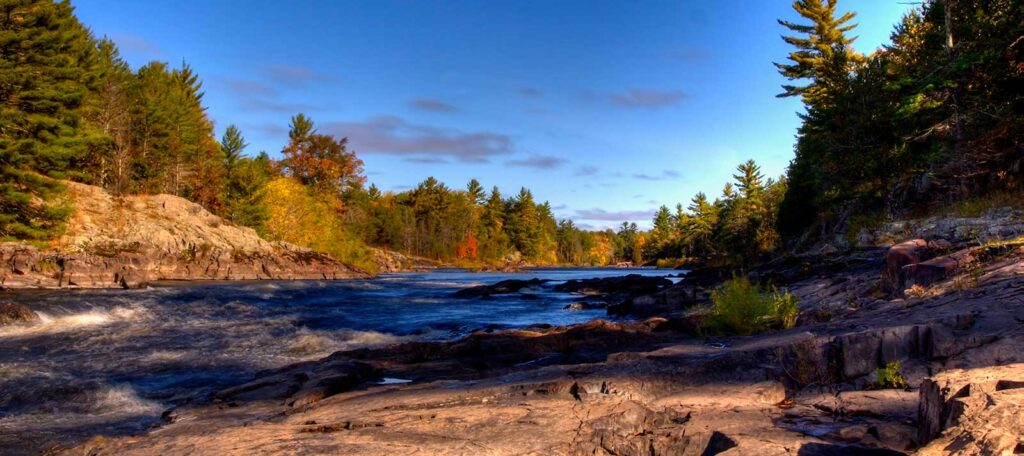
9 responses to “Yazoo Pumps: The Zombie Project That Must End”
I know a messed up a lot but please don’t come for me.
I just want to say wow… I’m a 13-year-old girl from Mississippi that moved sadly. I’d also like to say that every time I and my family do get to visit Mississippi it changes. I really don’t like it because that’s where I grew up at till I was like 7. I don’t like it because there are big Singh everywhere saying “Finish the pumps” and it’s not cute… and every then in now it stinks. And I just wanna thank whoever made this website did an amazing job because I never knew what “Finish the pumps” mean.
She is, in this particular action, against the Corps/agreeing that they are crap.
I never heard so many false statements in my life.Typical Corp Engineers crap.You spending billions to raise levees to keep the water out same area yet you dont want pumps to pump it out.Trying justify why you have a job.All politics.
Your data is flawed.I live in the area that has been flooded for 5 consecutive months.The wildlife in thid basin is devastated. 550,000 acres are under water.250,000 acres of forest have been flooded since Jan. 2019 and st this date July 17 is still flooded We affected residents will break thr backs of your so called environmental protection
Black bear, deer, raccoon, and a large number of other wildlife are being displaced, starved, and endangered by the man-made flooding of over 550,000 acres of land in the Yazoo backwater area now. If pumps are not the answer then the Corp of Engineers and others need to come up with a better idea that does not cause loss of homes and wildlife. I drive hwy 61 from Vicksburg to Cary every week and have for 20 years. My husband is a pastor at Cary Baptist Church. Each year since around 2008 the flooding has gotten worse. This year from Redwood to Cary on both sides of 61 it looks like a reservoir and has since February. We have counted over a 100 raccoon that have been driven out of the fields and trees to die on the highway in seach of habitat and food. I understand protecting the wetlands from being drained, but flooding that covers twice the acreage and is so deep that the birds and other wildlife cannot remain in their normal habitat area, making them move miles just to find food and a place to raise their young and nest not the right decisions. Stop just speaking out against the pumps and come up with a way to keep the wetlands without the loss of property and habitat. Be a solution to this problem and not part of the problem.
Practically every thing said against the yazoo backwater pump project is a lie.
The pump system is designed to pump water away to keep dry lands dry not to pump out 200,000 and not even 67,000 acres of wetlands
Studies, real studies show that there will be no adverse impact on wild life marine life or lands below the structure.
The idea that the pumps are to benefit a few farmers are false. The reality is that there are a few very wealthy people buying influence to prevent the installation of the pumps. These people are not concerned with the environment they are involved in a land grab. Some have stated in public they want to see the farmers there go bankrupt so they can buy the land. Its time the truth is told and the land grab is stopped. STOP SUPPORTING A LAND GRAB – INSTALL THE PUMPS.
So what do y’all think now?
This article is filled with inaccurate and fictional data. The waterfowl have lost their nesting sites due to the trapped rainwater in the Mississippi Delta. Hundreds of duck boxes are underwater turkey nests, rabbits, deer, and any terrestrial animal we are stewards of. This article is falsely accusing the pumping station of “destructive consequences” which are currently due to a pumping station. This ongoing flood has killed thousands of animals and displaced thousands more. . Please educate yourself on the true and tested dat by going to #forgottenbackwaterflood . The pumps will increase wetlands and reforest trees that have died because of too high levels of water for prolonged periods of time. This does not increase farming land. It protects the environment. The water that would be removed would be insignificant when pumped out. It’s rainwater.
The pumps will not cost as much as you claim. The destruction of intense flooding will be in the 100’s of millions. We will not know the cost until August because the flooding has been in the ground here for over six months.
Please educate yourself on the facts and truths. The EPA was deceived and political pressure by special interest groups that push a false agenda.
There are many people, and animals that cannot fly away like the waterfowl you seem to want to protect. I urge you to come see the devastation for yourselves or go to #forgottenbackwaterflood .